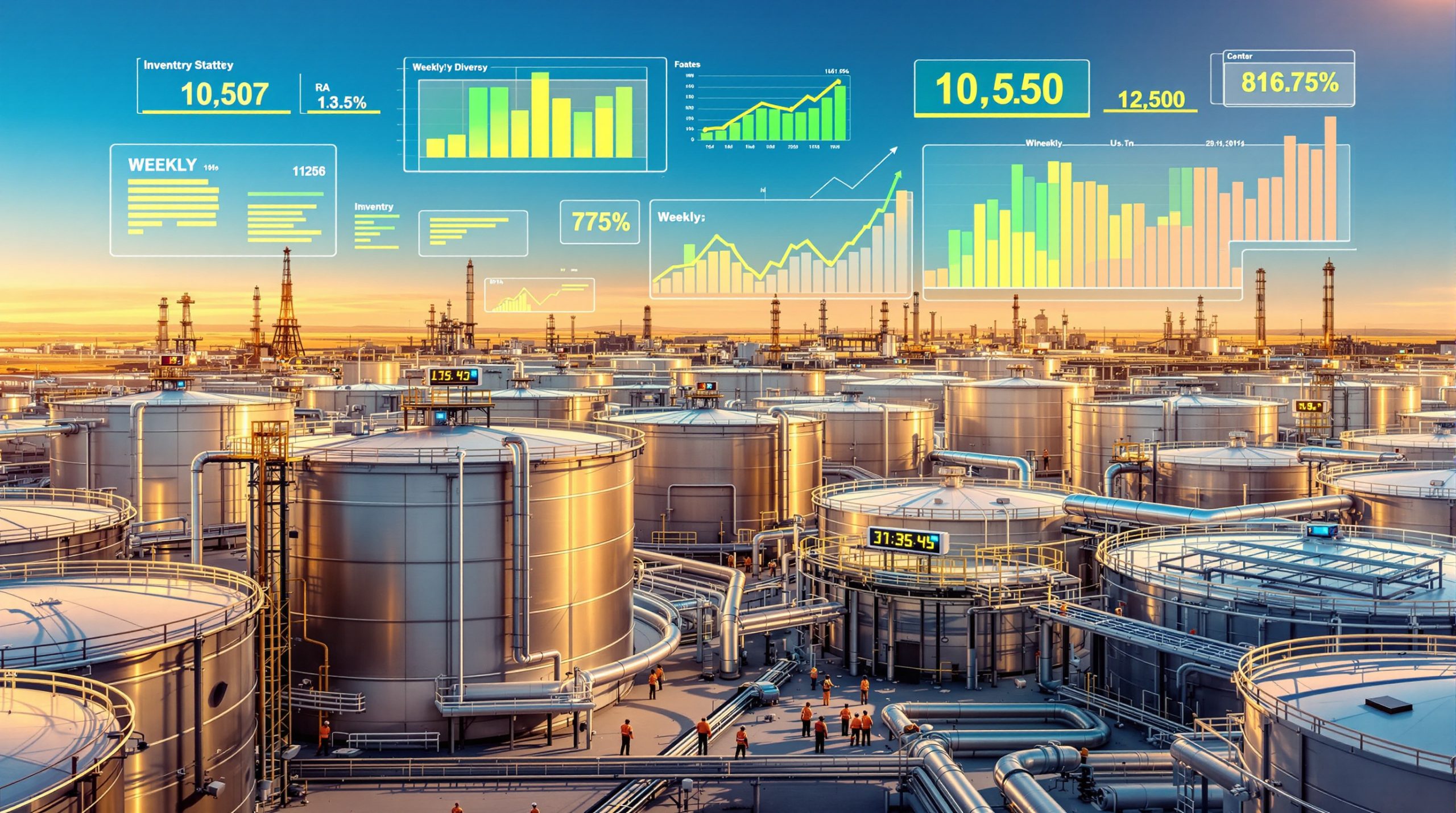Market Dynamics Behind Copper's Historic Rally
The London Metal Exchange copper market has achieved a remarkable milestone, with the LME copper price record high reaching an unprecedented $11,200 per metric ton in October 2025. This historic achievement represents more than just a numerical record – it signals a fundamental shift in global copper market dynamics that extends far beyond typical price fluctuations.
Multiple convergent factors have created what industry analysts describe as perfect storm conditions for copper pricing. The combination of supply chain disruptions, renewed institutional investment interest, and persistent inventory constraints has propelled the red metal into uncharted territory, marking a 25% year-to-date gain that has captured the attention of commodity traders worldwide.
The significance of this price breakthrough extends beyond immediate market implications. Copper's role as a bellwether for economic health, combined with its critical importance in energy transition technologies, makes these record levels particularly noteworthy for understanding broader industrial trends and investment flows.
Supply Chain Disruptions Reshape Global Availability
Mining sector challenges have fundamentally altered copper production country 2025 global supply forecast dynamics throughout 2025. A series of operational setbacks at major production facilities has removed substantial volumes from global supply chains, creating immediate price pressure that reverberates across international markets.
Critical Production Impacts:
- Indonesian mining operations facing extended shutdowns affecting 3% of global output
- Chilean facilities operating below capacity for several consecutive months
- Congo-based operations experiencing various operational disruptions
- Production guidance downgrades from over a dozen major copper producers
The cumulative effect of these disruptions has altered market expectations for refined metal availability extending into 2026. Industry forecasting organisations, including the International Copper Study Group, anticipate these challenges will result in refined copper shortfalls that could persist well beyond the current market cycle.
Furthermore, regional production variations have created additional complexity in global supply chain management. Mining companies have issued multiple production guidance reductions, with industry analysts tracking significant downgrades that have fundamentally shifted market expectations for copper availability through the next production cycle.
Investment Fund Positioning Drives Market Momentum
Institutional investor behaviour has undergone a dramatic transformation in copper markets, marking a significant reversal from the cautious positioning adopted earlier in 2025. Fund managers have returned to copper with renewed confidence, creating substantial buying pressure that amplifies underlying fundamental strength.
Investment Flow Analysis:
| Metric | August 2025 | October 2025 | Change |
|---|---|---|---|
| Long Positions | 55,325 contracts | 87,152 contracts | +58% |
| Short Position Reduction | Baseline | Nearly 50% decline | Significant |
| Net Market Exposure | Lower levels | 1M+ tons equivalent | Substantial |
The return of investment capital to copper markets represents more than just momentum trading. Fund managers are responding to a combination of technical breakouts and fundamental supply-demand imbalances that suggest sustained price support at elevated levels, aligning with current copper investment strategies.
Market Psychology Insight: The convergence of fund flows with fundamental supply constraints creates a self-reinforcing cycle where technical momentum attracts additional investment capital, further supporting price appreciation.
This positioning shift occurred against a backdrop of improving trade relations and reduced tariff uncertainty between major copper-consuming nations. The partial resolution of trade tensions has removed significant macro headwinds that previously constrained institutional appetite for copper exposure.
Inventory Dynamics Create Market Vulnerability
Exchange-registered copper inventories continue operating at critically low levels, creating structural market vulnerabilities that support premium pricing. LME warehouse stocks remain constrained at approximately 135,350 tons of registered inventory, with minimal additional cushion from off-warrant storage facilities.
Inventory Stress Indicators:
- Total registered stocks well below historical averages
- Limited geographic diversification across warehouse networks
- Periodic cash premium spikes indicating physical market tightness
- Regional price dislocations reflecting supply chain bottlenecks
The persistence of inventory constraints reflects broader structural changes in global copper flows. However, trade policy uncertainties and regional supply chain reconfigurations have contributed to persistent low stock levels that amplify price sensitivity to supply disruptions.
In addition, China's role in LME inventory dynamics has proven particularly significant. While Chinese deliveries to LME warehouses provided temporary relief in July, pushing inventory to 159,000 tons, subsequent export patterns have reduced this cushion substantially. September exports dropped to just 26,400 tons, primarily destined for Southeast Asian markets rather than LME warehouse locations.
Regional Price Differentials Signal Market Stress
The persistence of significant regional price differentials provides compelling evidence of ongoing market structural imbalances. CME copper prices continue trading at substantial premiums over LME contracts, indicating continued dislocation in global copper flows despite reduced tariff uncertainties.
Price Differential Analysis:
- CME spot premium over LME: $300+ per ton
- Forward curve premiums even more pronounced
- Import arbitrage opportunities remain open
- Continued US copper import flows despite reduced tariff threats
These price differentials reflect more than temporary market inefficiencies. Consequently, they signal fundamental changes in global copper trade patterns that may persist even as immediate trade policy concerns diminish. The resilience of these spreads suggests structural factors beyond immediate supply-demand balances are influencing regional pricing.
According to Trading Economics data, copper futures have shown remarkable strength across multiple exchanges, with the current pricing environment reflecting both supply constraints and robust demand fundamentals.
Economic Fundamentals Support Elevated Pricing
What Are the Key Demand Growth Vectors?
Macroeconomic conditions have aligned to support higher copper prices across multiple dimensions. Currency dynamics, industrial demand patterns, and monetary policy developments all contribute to an environment conducive to commodity price appreciation, reflecting the key copper growth drivers.
Demand Growth Vectors:
- Electric vehicle production expansion requiring substantial copper content
- Renewable energy infrastructure buildout creating sustained demand
- Grid modernisation projects across developed economies
- Industrial automation requiring copper-intensive technologies
Dollar weakness has enhanced the attractiveness of dollar-denominated commodities for international buyers, providing additional tailwinds for copper price appreciation. This currency dynamic operates independently of supply-side constraints, creating multiple layers of price support.
For instance, the energy transition represents perhaps the most significant long-term demand driver for copper markets. Electric vehicles require approximately four times more copper than traditional internal combustion engines, while renewable energy infrastructure demands substantial copper content for electrical transmission and generation equipment.
Geopolitical Factors Influence Market Sentiment
Trade policy developments continue exerting significant influence on copper market dynamics, despite recent diplomatic progress between major trading partners. The resolution of immediate tariff threats has removed some downside pressure, but underlying tensions persist regarding critical mineral supply chains.
Policy Impact Assessment:
- US-China trade relationship improvements provide market stability
- Remaining tariff uncertainties create potential volatility triggers
- Strategic resource considerations elevate copper's geopolitical importance
- Government stockpiling programmes may affect future demand patterns
Recent diplomatic developments have provided some market stability, though underlying structural tensions regarding critical mineral access and supply chain security remain unresolved. These factors create ongoing background uncertainty that may influence market sentiment during periods of fundamental weakness.
Furthermore, the current environment also presents opportunities for diversified commodity exposure, particularly in the copper-uranium investment outlook which offers strategic positioning across critical metals essential for the energy transition.
Sustainability and ESG Considerations
Environmental, social, and governance factors are increasingly influencing copper market dynamics. Mining operations face growing scrutiny regarding environmental impact, community relations, and sustainable extraction practices, potentially constraining future supply additions.
ESG Impact Factors:
- Stricter environmental regulations increasing operational costs
- Community opposition to new mining projects
- Extended permitting timelines for mine development
- Investor scrutiny of mining company ESG practices
These considerations may limit the industry's ability to respond quickly to price signals with increased production capacity. Consequently, this could extend periods of supply-demand imbalance and support higher price levels over longer timeframes.
Technical Analysis and Price Discovery
Chart patterns and technical indicators suggest copper has established new trading ranges following the breakthrough to record levels. Momentum indicators show some divergence that could signal consolidation phases, though underlying trend strength remains intact.
Technical Considerations:
- Price discovery above psychological resistance levels
- Volume patterns supporting sustained institutional interest
- Moving average alignments indicating trend continuation
- Support levels established in $10,000-$10,500 range
The establishment of new trading ranges reflects fundamental changes in market structure rather than temporary price spikes. This suggests the recent price appreciation may represent a permanent shift in copper's valuation framework rather than cyclical fluctuation.
As reported by Reuters, the breakthrough to these levels has attracted significant market attention and institutional interest, supporting the view that current pricing reflects more than temporary market conditions.
Future Market Outlook and Risk Assessment
What Does the Long-term Outlook Hold for Copper?
Long-term copper demand growth appears well-supported by electrification trends and infrastructure modernisation requirements. However, the sustainability of current LME copper price record high levels faces potential challenges from demand moderation and eventual supply recovery.
Current copper price prediction models suggest sustained strength, though volatility remains a key consideration for investors and industrial users alike.
Market Consensus Framework:
- Analyst price targets: $10,500-$11,500 range
- Supply deficit projections: Continuing through 2026-2027
- Demand growth estimates: 3-4% annually
- Investment risk rating: Positive with volatility warnings
Risk Disclaimer: While fundamental drivers support higher copper prices, current levels may experience significant volatility based on macroeconomic developments, supply chain recovery, or changes in trade policy. Investors should carefully consider risk management strategies given the potential for both continued upside and substantial price corrections.
The copper market's achievement of record pricing reflects a complex interplay of supply constraints, investment flows, and structural demand growth. While current levels may face near-term volatility, the underlying fundamentals supporting higher copper prices appear likely to persist as global electrification accelerates and mining supply chains face ongoing operational and regulatory challenges.
Supply additions face increasing development challenges and longer lead times, suggesting that even sustained high prices may not quickly restore supply-demand balance. This dynamic, combined with growing strategic importance of copper in energy transition technologies, supports expectations for continued strength in LME copper price record high levels over the medium term.
Ready to Capitalise on Historic Copper Price Movements?
Discovery Alert's proprietary Discovery IQ model delivers real-time alerts on significant copper and mineral discoveries, instantly empowering subscribers to identify actionable opportunities ahead of the broader market during periods of unprecedented commodity price strength. Begin your 30-day free trial today and secure your market-leading advantage while copper markets reshape global investment landscapes.




